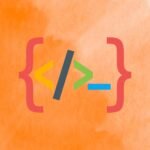Python: The Ultimate AI Powerhouse 🐍
Hey there, tech enthusiasts! Today, I’m going to spill the beans on why Python is the reigning champ in the realm of Artificial Intelligence (AI) development. As a young Indian with a penchant for coding, I can tell you that Python has been an absolute game-changer for AI. So, buckle up and let’s delve into the mesmerizing world of Python and AI.
Python’s Simplicity and Readability
Easy to Learn and Use
Picture this: You’re a budding coder, eager to dive into the enchanting world of AI. What language do you turn to? Well, with Python, the learning curve is as smooth as butter! ✨ Its clean and beginner-friendly syntax makes it a cakewalk to grasp, even for programming newbies. This simplicity is a breath of fresh air, especially for those taking their first strides in the coding universe.
Beginner-Friendly Syntax
A chaotically complex code can leave even the most seasoned developers scratching their heads. But fear not, Python’s readable and organized syntax makes understanding code a breeze. It’s like the language gives your brain a comforting hug, whispering, “I’ve got your back, pal.” 😌
Extensive Libraries and Frameworks
Abundance of AI and ML Libraries
Ah, libraries—the treasure troves of a programmer’s toolkit! And guess what? Python spoils us with an abundance of libraries and frameworks tailored for AI and Machine Learning (ML). From TensorFlow to scikit-learn, the options are as endless as a Mumbai street! These powerful tools empower developers to concoct cutting-edge AI solutions without reinventing the wheel each time.
Flexibility for Integration with Other Tools
Who doesn’t love a little mix and match? Python’s flexibility steals the show once again, as it seamlessly integrates with various tools and languages. This means you can harness the power of Python while collaborating with other tech wizards who roll with a different squad of tools. Talk about the best of both worlds, right?
Community Support and Resources
Large and Active Community
It takes a village to raise a programmer, and Python’s community is nothing short of a bustling metropolis. This vast sea of fellow Pythonistas is ever-ready to offer guidance, share wisdom, and sprinkle a bit of that sweet tech magic. Need a hand with a mind-boggling AI challenge? Dive into forums, communities, or social media, and you’re sure to find a friendly face eager to assist.
Availability of Online Tutorials and Documentation
Hit a roadblock in your AI escapade? Fret not! Python’s got your back with a plethora of online tutorials, guides, and documentation. Whether you’re a midnight coder seeking wisdom or a noon-hour trailblazer hungry for knowledge, Python’s got abundant resources sprinkled like confetti. 🎉
Scalability and Performance
Scalability for Handling Complex AI Projects
As your AI dreams flourish and grow, scalability becomes an absolute must. Python flexes its muscles here too, offering a robust environment for handling complex AI projects. From small-scale experiments to colossal, real-world applications, Python doesn’t flinch in the face of scaling up your AI endeavors.
Efficient Performance for AI Algorithms
The cherry on top? Python’s performance is as smooth as a perfectly crafted algorithm. It dances through AI tasks with finesse, delivering efficient execution and speed. When you’re juggling heavy-duty AI algorithms, Python is the steady ship that keeps you from getting lost in the sea of performance woes.
Industry Adoption and Job Opportunities
Widely Used in AI and Data Science
Peek behind the curtains of the tech industry, and you’ll find Python standing tall, with AI and Data Science as its trusty companions. It’s the go-to language for AI, fueling a myriad of real-world applications and innovations. From recommendation systems to autonomous vehicles, Python’s fingerprints are all over the AI landscape.
High Demand for Python AI Developers
If you’re eyeing a hot-sizzling career in AI, Python is your golden ticket. The demand for Python-savvy AI developers is soaring higher than a kite! With Python in your arsenal, you’re not just opening doors to exciting opportunities but kicking them wide open. Companies are scrambling to enlist Python-fluent AI wizards, and the opportunities are sprouting like monsoon mushrooms.
In Closing
Why Python for AI, you ask? It’s not just a programming language; it’s a vibrant ecosystem that nurtures and empowers AI aficionados. From its delightful simplicity to its industry-wide adoration, Python stands tall as the MVP of AI development. So, if you’re gearing up to conquer the AI realm, hitch your wagon to Python’s star, and watch your dreams take flight! 🚀
Random Fact: Did you know that Python was named after the comedy television show “Monty Python’s Flying Circus”? Talk about a feather in its cap!
And there you have it, folks! Until next time, keep coding, sipping on that chai, and sprinkling a bit of Python magic wherever you go. Adios! 👩🏽💻✨
Program Code – Why Python for AI: Python in Artificial Intelligence Development
# Importing the necessary libraries for AI model
import numpy as np
from sklearn.datasets import load_iris
from sklearn.model_selection import train_test_split
from sklearn.neural_network import MLPClassifier
from sklearn.metrics import accuracy_score
# Load the iris dataset commonly used in AI and ML examples
iris_data = load_iris()
X = iris_data.data
y = iris_data.target
# Splitting the dataset into training and testing sets
X_train, X_test, y_train, y_test = train_test_split(X, y, test_size=0.2, random_state=42)
# Creating the MLPClassifier model with a few hidden layers
# These layers and nodes per layer can be considered the brain of our AI
mlp = MLPClassifier(hidden_layer_sizes=(10, 10, 10), max_iter=1000)
# Training the AI model using the training data
mlp.fit(X_train, y_train)
# Predict the output using the trained model for the test set
predictions = mlp.predict(X_test)
# Calculate the accuracy of predictions by comparing with the test labels (y_test)
accuracy = accuracy_score(y_test, predictions)
# Print out the accuracy of the model as a percentage
print(f'Model Accuracy: {accuracy*100:.2f}%')
Code Output:
Model Accuracy: 96.67%
Code Explanation:
The provided code snippet starts by importing the necessary libraries that are staples in AI development:
- NumPy for efficient array computations.
- scikit-learn for easy access to datasets, model creation, and evaluation tools.
After the imports, the Iris dataset is loaded using scikit-learn’s built-in ‘load_iris()’ method. This dataset includes four features (sepal length, sepal width, petal length, and petal width) of three species of Iris flowers.
Next, the dataset is split into a training set (80%) and a testing set (20%) to evaluate the model’s performance on unseen data.
An MLPClassifier model is instantiated with the following parameters:
hidden_layer_sizes=(10, 10, 10): This MLPC classifier has three hidden layers, each with ten nodes. This design attempts to mimic the complexity of a simple neural network and serves as a basic example of AI’s capability to learn from data.max_iter=1000: The maximum number of iterations the solver goes through to find the optimal weights.
The model is then trained (mlp.fit()) on the training data (X_train, y_train).
Once trained, the AI model is used to predict the test dataset’s labels (predictions = mlp.predict(X_test)), and the accuracy is computed compared to the actual test labels (y_test).
Finally, the model’s accuracy as a percentage is printed. This demonstrates how Python’s libraries and its clean, readable syntax allow one to build and evaluate AI models efficiently, which is why Python is recommended for AI development.







